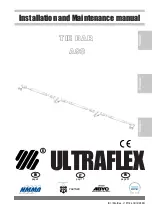
IzoT U60 DIN Network Interface User’s Guide
25
Acknowledgement Rules
The
Ack
bit is used to send a success response to a previous transfer, specifically
transfers that send data that is above the LLP (non-LLP data). These are transfers
of messages and transfers of local network interface commands.
To reduce traffic, not all data transfers require acknowledgement. The following are
the acknowledgement rules:
•
If a transfer requires an acknowledgment and there is no other data that needs
to be sent, a
CpNull
packet is sent with the
Pass/Ack
bit set. Otherwise, if
there is outgoing traffic to be sent the
Ack
bit will be included in the following
transfer. This is true for both uplink and downlink data messages.
• Code packets that do not require an acknowledgment via the
Ack
bit are
packets that result in an immediate response anyway. The response implies
acknowledgment. The following table lists these types of code packets:
Code Packet
Description
CpMsgReq
The U60 will respond with either the
CpMsgAck
,
or a criss-cross could occur and an unrelated
code packet will be sent by the U60.
CpMsgAck
The host does not need to acknowledge this
message. Instead it provides an implied
acknowledgement by sending the
CpMsg
code
packet followed by a message packet
•
Data that is sent and requires acknowledgement will persist in the source until
the acknowledgment is received. While the persistent data is waiting for
acknowledgement, the
Acknowledge Wait
timeout, which is 300ms for the
U60 and the driver, causes the persistent data to be re-sent.
Sequence Number Cycling and Duplicate Detection
The sequence number is used to reject duplicate non-LLP data. Duplicate LLP data
does not affect the LLP; therefore, the sequence number is only cycled for each
transfer of non-LLP data. For example, two consecutive
CpMsgReq
packets have no
effect—the second
CpMsgReq
packet reinstates the ready-receive state and the
CpMsgAck
is re-sent.
U60 Command Set
Uplink local network interface commands that must also convey additional data (for
example, the
niL2MODE
response command) will always result in a data message
that is at least 3 bytes in length. This is because the host driver expects at least 4
bytes of data (3 bytes plus checksum) to appear following a code packet.
Summary of Contents for IzoT U60 DIN
Page 5: ......
Page 18: ...IzoT U60 DIN Network Interface User s Guide 16...
Page 30: ...IzoT U60 DIN Network Interface User s Guide 28...
Page 34: ......








































